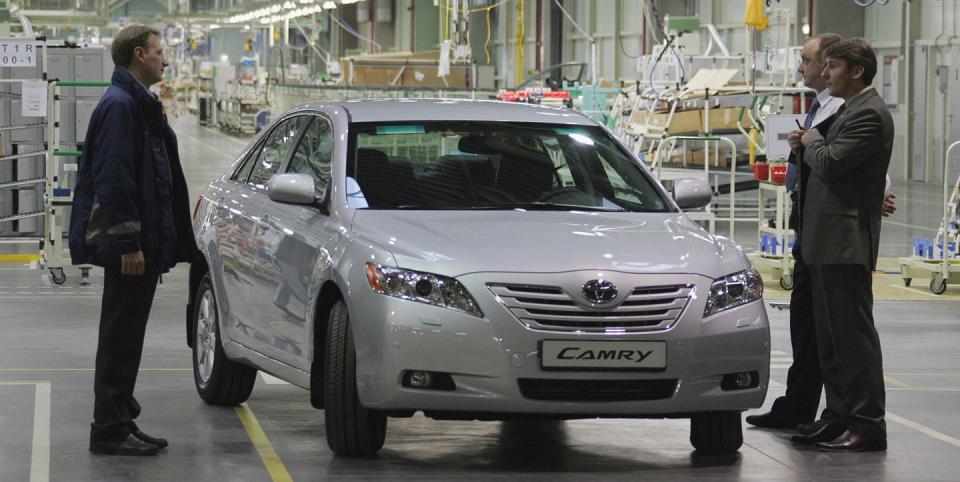Here’s What Could Happen to Toyota’s Russia Plant

Toyota shutters Saint Petersburg plant in Russia's northwest six months after production was suspended in March, due to lack of stable parts supply.
The plant is likely to be offered for sale, but the tooling would be unable to produce more Toyota models.
Toyota is the latest automaker to shut down operations at a facility in Russia following disruptions in the supply chain after the outbreak of the war in Ukraine.
Toyota is ending its manufacturing presence in Russia six months after it suspended production in the aftermath of the outbreak of war in Ukraine, officially closing the Saint Petersburg plant in the northwest of the country, on the Baltic Sea, that had produced the Camry and the RAV4 for a number of European and Central Asian countries. The decision comes after a prolonged holding pattern during which Toyota had held open the possibility of resuming production, despite increased supply chain challenges.
Falling demand for new vehicles within the country and several of its neighbors was expected by some to prompt Toyota to leave even if the supply of parts had not seen disruption. But the plant, which had been idle since March 4, has succumbed to shortages of parts and materials, rather than following a political decision.
Hyundai and Nissan also have plants nearby, both of which have stood idle since March.
"During this period we have fully retained our workforce and ensured our facility was ready to re-start production if the circumstances allowed. However, after six months, we have not been able to resume normal activities and see no indication that we can re-start in the future," Toyota said in a statement.
The Camry had been produced in Saint Petersburg since 2007, and the RAV4 since 2016, with the plant designed to produce 100,000 vehicles a year. The automaker also assembles the Land Cruiser Prado in Vladivostok in a joint venture with automaker holding company Sollers, albeit on a much smaller scale, producing about a thousand vehicles each month. Production of the Land Cruiser Prado started in the Russian far east in 2013.
There is already speculation regarding what will happen to the plant itself: Will another automaker be able to step in right away, or will the plant sit idle for some time?
"Obviously, the new owners won't be able to restart Camry production or any other Toyota model, as they need a lot of components from suppliers," Yaroslav, an expert on the country's auto industry, told Autoweek. "I'm surprised some in the media are suggesting this. They couldn't do that even if they kept all the presses. Even Toyota itself couldn't make it work this whole summer, and they were spending cash just keeping the plant open."
Toyota is not leaving Russia when it comes to sales operations, having indicated it will optimize and restructure its dealership network in Moscow. But the assembly hardware, including the tooling for the Camry and the RAV4, could leave the country.
"I have to expect that a Chinese automaker or AvtoVAZ could become interested, perhaps a domestic truck maker," Yaroslav adds. "But before that happens demand for cars has to go up. Right now inexpensive cars are doing well enough, but other models like even the RAV4 are too pricey. If anything, I can picture an assembly line from China or AvtoVAZ being transported there. But that's perhaps a year or two away, as sales have to recover."
Toyota may not be the only foreign automaker that could leave operations in Russia this year. Mazda is said to be mulling ending its joint venture with Sollers in the far east, once again due to parts shortages, but has not made an official decision in the matter.
In a way it's surprising that Toyota and Mazda had not left sooner, given the mass departure of other automakers from Russia that had maintained operations in the country for years. Earlier this spring Volkswagen had shuttered its own plants in Russia, amid a mass exodus of other European companies with a manufacturing presence in the country.

 Yahoo Autos
Yahoo Autos 